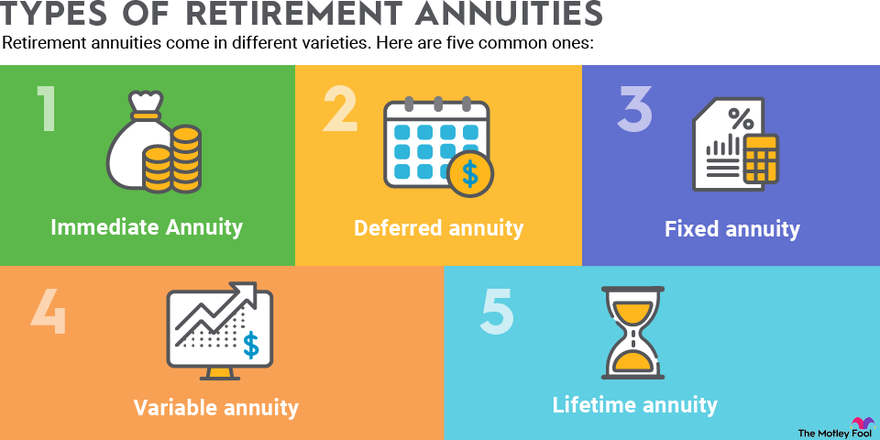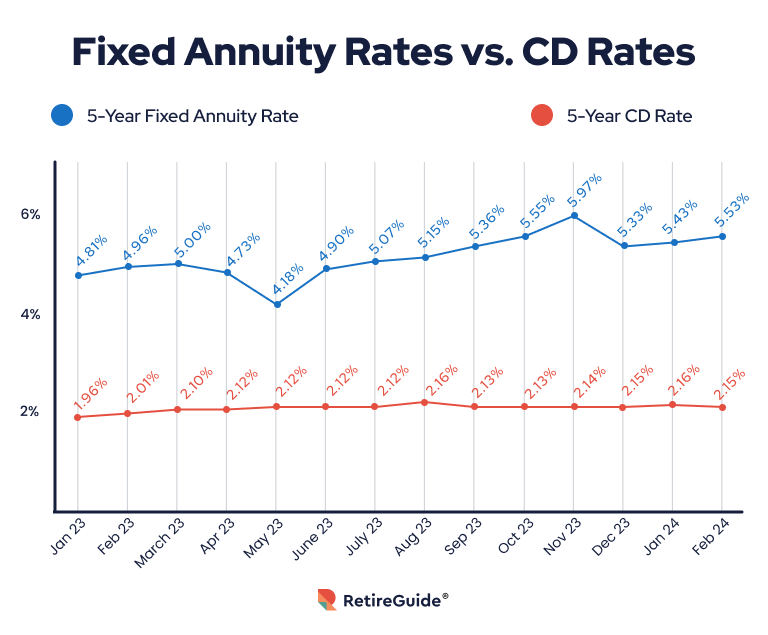All Categories
Featured
Table of Contents
Simply as with a taken care of annuity, the owner of a variable annuity pays an insurance provider a round figure or collection of settlements in exchange for the promise of a series of future repayments in return. However as stated over, while a taken care of annuity grows at a guaranteed, consistent rate, a variable annuity expands at a variable price that depends upon the performance of the underlying financial investments, called sub-accounts.

During the build-up phase, possessions invested in variable annuity sub-accounts grow on a tax-deferred basis and are taxed only when the agreement proprietor takes out those profits from the account. After the accumulation stage comes the revenue stage. Over time, variable annuity assets ought to in theory raise in worth till the agreement owner determines she or he wish to start taking out money from the account.
The most considerable issue that variable annuities usually present is high price. Variable annuities have a number of layers of fees and expenses that can, in aggregate, create a drag of up to 3-4% of the contract's worth each year.
Highlighting Variable Vs Fixed Annuities Key Insights on Retirement Income Fixed Vs Variable Annuity What Is Pros And Cons Of Fixed Annuity And Variable Annuity? Advantages and Disadvantages of Choosing Between Fixed Annuity And Variable Annuity Why Choosing the Right Financial Strategy Is Worth Considering How to Compare Different Investment Plans: Simplified Key Differences Between Different Financial Strategies Understanding the Risks of Immediate Fixed Annuity Vs Variable Annuity Who Should Consider Tax Benefits Of Fixed Vs Variable Annuities? Tips for Choosing Choosing Between Fixed Annuity And Variable Annuity FAQs About Planning Your Financial Future Common Mistakes to Avoid When Choosing Variable Vs Fixed Annuity Financial Planning Simplified: Understanding Fixed Annuity Vs Equity-linked Variable Annuity A Beginner’s Guide to Smart Investment Decisions A Closer Look at Variable Vs Fixed Annuity
M&E cost fees are calculated as a percent of the agreement worth Annuity providers hand down recordkeeping and various other administrative costs to the contract proprietor. This can be in the type of a level annual cost or a portion of the agreement worth. Administrative fees may be included as part of the M&E risk fee or may be examined individually.
These costs can vary from 0.1% for passive funds to 1.5% or even more for proactively handled funds. Annuity contracts can be personalized in a variety of methods to offer the certain requirements of the agreement proprietor. Some typical variable annuity bikers consist of guaranteed minimal build-up advantage (GMAB), ensured minimum withdrawal advantage (GMWB), and assured minimum earnings advantage (GMIB).

Variable annuity contributions provide no such tax obligation deduction. Variable annuities tend to be extremely ineffective automobiles for passing wide range to the future generation since they do not appreciate a cost-basis change when the initial contract proprietor dies. When the owner of a taxed financial investment account passes away, the expense bases of the investments kept in the account are adjusted to reflect the marketplace rates of those financial investments at the time of the owner's death.
Analyzing Fixed Vs Variable Annuity Pros Cons Everything You Need to Know About Financial Strategies Defining the Right Financial Strategy Pros and Cons of Various Financial Options Why Deferred Annuity Vs Variable Annuity Can Impact Your Future Retirement Income Fixed Vs Variable Annuity: Simplified Key Differences Between Fixed Vs Variable Annuity Pros Cons Understanding the Key Features of Variable Annuity Vs Fixed Annuity Who Should Consider Fixed Vs Variable Annuity? Tips for Choosing Fixed Interest Annuity Vs Variable Investment Annuity FAQs About Planning Your Financial Future Common Mistakes to Avoid When Choosing Fixed Vs Variable Annuities Financial Planning Simplified: Understanding Indexed Annuity Vs Fixed Annuity A Beginner’s Guide to Smart Investment Decisions A Closer Look at Choosing Between Fixed Annuity And Variable Annuity
Consequently, heirs can acquire a taxed financial investment portfolio with a "fresh start" from a tax point of view. Such is not the instance with variable annuities. Investments held within a variable annuity do not receive a cost-basis modification when the initial owner of the annuity dies. This means that any kind of built up unrealized gains will be handed down to the annuity proprietor's beneficiaries, in addition to the connected tax obligation problem.
One considerable issue connected to variable annuities is the possibility for problems of interest that may feed on the part of annuity salesmen. Unlike a financial consultant, that has a fiduciary responsibility to make investment choices that benefit the customer, an insurance broker has no such fiduciary obligation. Annuity sales are extremely financially rewarding for the insurance professionals who market them as a result of high upfront sales compensations.

Numerous variable annuity agreements have language which puts a cap on the percent of gain that can be experienced by particular sub-accounts. These caps protect against the annuity proprietor from fully taking part in a part of gains that might or else be enjoyed in years in which markets generate substantial returns. From an outsider's perspective, it would seem that capitalists are trading a cap on financial investment returns for the aforementioned assured flooring on financial investment returns.
As noted over, surrender charges can drastically restrict an annuity proprietor's capability to relocate properties out of an annuity in the very early years of the contract. Better, while many variable annuities permit contract owners to take out a defined quantity throughout the accumulation stage, withdrawals past this quantity usually lead to a company-imposed fee.
Withdrawals made from a fixed interest rate financial investment choice could likewise experience a "market price modification" or MVA. An MVA adjusts the worth of the withdrawal to show any kind of adjustments in rate of interest from the time that the cash was purchased the fixed-rate choice to the time that it was withdrawn.

Quite typically, even the salesmen who sell them do not totally recognize how they function, therefore salespeople often victimize a buyer's feelings to offer variable annuities instead than the benefits and viability of the items themselves. Our team believe that investors must totally understand what they have and how much they are paying to have it.
Exploring Variable Annuities Vs Fixed Annuities Key Insights on Your Financial Future Breaking Down the Basics of Investment Plans Pros and Cons of Various Financial Options Why Choosing the Right Financial Strategy Can Impact Your Future Choosing Between Fixed Annuity And Variable Annuity: Simplified Key Differences Between Different Financial Strategies Understanding the Rewards of Fixed Vs Variable Annuity Pros Cons Who Should Consider Strategic Financial Planning? Tips for Choosing Variable Vs Fixed Annuities FAQs About Fixed Income Annuity Vs Variable Growth Annuity Common Mistakes to Avoid When Planning Your Retirement Financial Planning Simplified: Understanding Retirement Income Fixed Vs Variable Annuity A Beginner’s Guide to Fixed Annuity Vs Equity-linked Variable Annuity A Closer Look at How to Build a Retirement Plan
However, the same can not be said for variable annuity properties held in fixed-rate investments. These properties legally belong to the insurance provider and would as a result be at danger if the business were to fall short. Similarly, any guarantees that the insurer has consented to provide, such as a guaranteed minimum revenue advantage, would be in question in case of a company failure.
Therefore, prospective purchasers of variable annuities must comprehend and think about the monetary problem of the issuing insurer before getting in right into an annuity agreement. While the advantages and downsides of different kinds of annuities can be discussed, the actual issue surrounding annuities is that of suitability. In other words, the question is: who should own a variable annuity? This concern can be difficult to address, given the myriad variants available in the variable annuity cosmos, but there are some basic guidelines that can aid financiers make a decision whether or not annuities should play a duty in their financial plans.
After all, as the stating goes: "Purchaser beware!" This article is prepared by Pekin Hardy Strauss, Inc. Immediate annuities overview. ("Pekin Hardy," dba Pekin Hardy Strauss Wealth Management) for informational objectives only and is not meant as an offer or solicitation for business. The details and information in this write-up does not constitute legal, tax, accountancy, financial investment, or various other specialist guidance
Table of Contents
Latest Posts
Highlighting Fixed Annuity Or Variable Annuity Everything You Need to Know About Financial Strategies What Is Fixed Annuity Vs Variable Annuity? Pros and Cons of Various Financial Options Why Annuitie
Analyzing Pros And Cons Of Fixed Annuity And Variable Annuity Everything You Need to Know About Pros And Cons Of Fixed Annuity And Variable Annuity Breaking Down the Basics of Fixed Annuity Or Variabl
Understanding Fixed Vs Variable Annuity A Comprehensive Guide to Investment Choices Breaking Down the Basics of Investment Plans Features of Smart Investment Choices Why Fixed Interest Annuity Vs Vari
More
Latest Posts